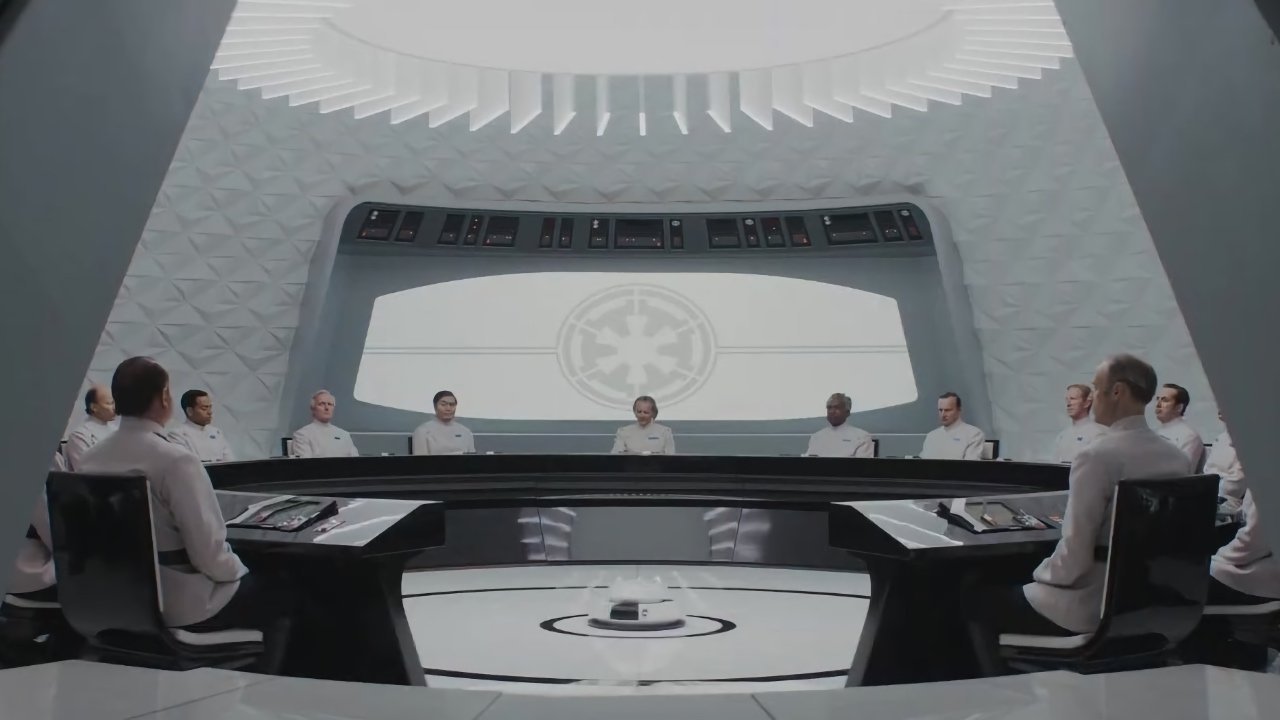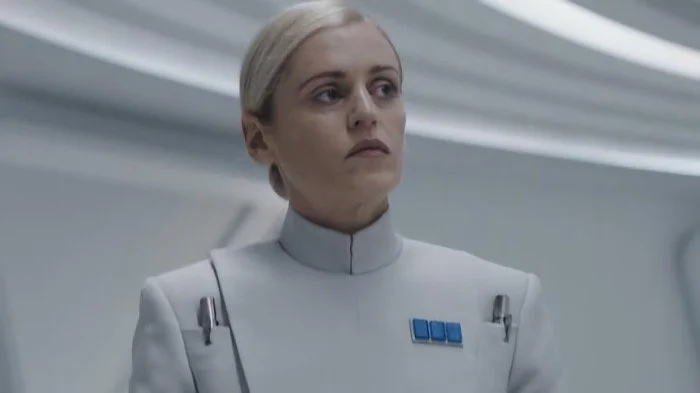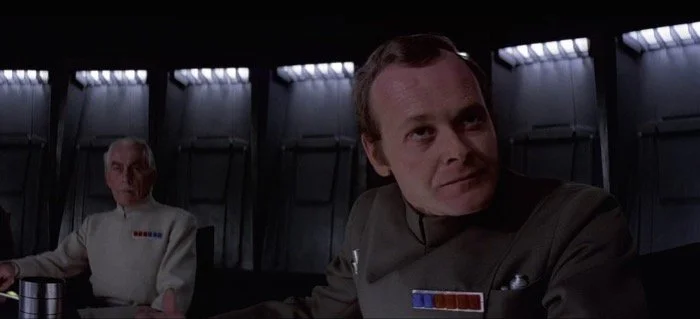A Closer Look At The Imperial Security Bureau
Image Source: CBR
"We are healthcare providers. We treat sickness. We identify symptoms.
The longer we wait to identify a disorder, the harder it is to treat the disease."Major Partagaz - ISB
When Tarkin and Vader briefed the high-ranking Imperials on the first Death Star, an elderly man with a mustache can be seen in the background. Wearing a white uniform jacket, the man visually stood out from all the other men wearing grey-green uniforms, but by that time in 1977, nobody knew who this man was. But as Star Wars lore expanded, it became clear that it was always a good idea to fear those people. Because they saw, heard, and knew many things and were never afraid to use them against whoever they regarded as potential enemies.
Wullf Yularen, the aforementioned grey-haired man who was present when Vader choked Motti was a member of the Imperial Security Bureau (ISB). As was Alexandr Kallus, once a foe of Hera Syndulla's Spectre group, who later changed sides and became an informant for the Rebel Alliance. Most recently, the fourth episode of Andor introduced Dedra Meero, an ISB supervisor, and provided a deeper look into the machinations of the ISB 5 years before the Battle of Yavin.
But what exactly was the ISB?
RELATED:
The following is based on the current incarnation of the ISB, which differs quite a bit from how the Imperial Security Bureau was portrayed in the former Expanded Universe.
Its place In The Empire
The ISB was created by Emperor Palpatine as secret law enforcement and intelligence organization shortly after the declaration of the First Galactic Empire, as a kind of successor to the Senate Bureau of Intelligence that was active during the clone wars.
Starting with only a handful of agents, the ISB grew into a massive organization in the first decade after the end of the Republic, doubling the size of its sister- (and often rival) organization Imperial Intelligence. And still, the ISB, located in a large building complex on Coruscant was only one sub-division of the Commission to the Preservation of the New Order (COMPNOR) that was dedicated to spreading Imperial propaganda and snuffing out all potential enemies of the new regime.
Image Source: SFGazette
Though the ISB often operated under the command of the Imperial Navy it enjoyed a great deal of independence and autonomy, acting at its own will and command and free from the Imperial bureaucracy, which is exactly what made it so dangerous.
High-ranking members of the ISB had the authority to command stormtrooper squads, take control of military vessels and vehicles (including Star Destroyers), override orders of both civilian and military authorities, and quickly replace other officers should they become suspicious.
To differentiate itself even more from the rest of Imperial Intelligence, the ISB even created its own slang words, like 'crustbusting' (provoking a suspect to commit a crime), 'scattering' (interrogating a suspected innocent in hopes they react suspiciously) or 'Jabba' (framing a wanted suspect).
Changing Tasks
Directly after the clone wars, the ISB was tasked with overseeing the dismantling of Separatists' warships and supplies and destroying propaganda material of the Confederacy of Independent Systems. But only a few years later, when the first pockets of resistance against the Empire began to emerge, the focus shifted toward surveillance, interrogation, and later brainwashing.
After the destruction of the first Death Star, the ISB became even keener to increase public surveillance, trying to create sleeper cells on many planets to root out members of the hated Rebel Alliance.
In the days after the death of Palpatine on the Second Death Star, the ISB worked hard to keep his demise a secret from the public and to hide the Emperor's contingency plans from the rebels.
Organization
At the top of the ISB stood a single, still unnamed director, who was assisted by deputy director Harus Ison and Wullf Yularen, who in turn controlled the ISB's high command.
Image Source: starwars.com
To cope with the growing variety of tasks, several branches of the ISB were created:
Surveillance: this was by far the biggest organization inside the ISB, tasked with deciphering encrypted information and analyzing data that could lead to potential enemies of the Empire.
Interrogation: the primary mission of the ISB's second-largest branch was to ruthlessly extract information from various lifeforms throughout the galaxy.
Re-Education: not shy of using psychological manipulation and pharmaceutical conditioning this branch was tasked with bringing resistant citizens of the Empire in line with the new regime, more often than not leading to brainwashing.
Enforcement: this branch provided backup for agents in the field whenever needed.
Imperial Military Department of Advanced Weapons Research: this division worked on many secret weapon projects. One of its leaders was Orson Krennic, the man responsible for the construction of the first Death Star.
Internal Affairs: suspecting traitors everywhere, this branch of ISB tried to snuff out insubordination within the Imperial ranks.
Investigation: using the data created by the Surveillance branch, ISB investigators tried to find and frame rebel spies and collaborators.
Special Operations: a group that was even more independent and working in secret than the rest of the ISB Special Operations was working on singular projects aimed at supporting the other ISB branches.
READ NEXT:
Source: Wookieepedia





